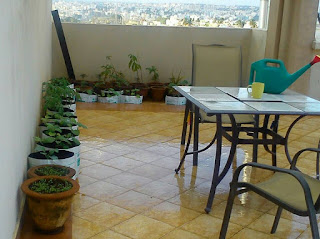It is never too Mulch !
Leaf composting
3 minute read
Often times we find garden wastes being burnt or dumped into garbage bins along with other wastes destined to reach the landfill.
It is a good practice to compost the fallen leaves along with other garden discards with the help of organic, microbial accelerators.
This will speed up the biodegradation process in urban setups that have challenges of space, manpower, and other resources.
The leaves of most trees contain twice as many minerals and micronutrients as manure. When used as mulch, or when composted they are worth a pound for a pound!
Here is why:
· Deep-rooted trees absorb minerals from the soil, a good portion of which goes to the leaves
·
They supply fibrous organic matter that nourishes the soil
·
Humus building qualities of mulch enrich all types
of soil
·
Help microbial proliferation apart from developing a thriving food chain/ecosystem.
·
They provide aeration in clayey soil types
·
Helps retain
moisture in sandy soils
·
Soaks up rain
·
Prevents evaporation
Why isn’t burning leaf litter or landfilling a good idea:
Sweeping them off and Landfilling is a waste of soil-enriching leaf compost.
Burning leaf litter releases hydrocarbons, nitrates, and carbon monoxide. These three gases create ground-level ozone layers which are bad for our ecosystem. The smoke released can irritate the eyes, nose, throat and affect our lungs, often leading to respiratory ailments.
If they are left as mulch as in a forest it is the best that one can do to protect the health of the soil and that of other living beings.
This is how:
· Leaf litter that is left as is, forms a mat/ground cover and decomposes gradually releasing nutrients to the umpteen microbes and beneficial bacteria to proliferate between the soil layer and the fallen leaf mulch making it their cozy home.
· It retains moisture in summer.
Leaf Composter
In urban setups, however, the fallen leaves cannot be left to the ground – due to mostly concreted surfaces.
Composting them above the ground in a composter or below, in a dug-up trench are ways to manage the leaf litter and benefit from the nutrient value in them.
Below the ground
They can be
composted in a dug-up trench (3 ft width by 4ft
length 2 ft depth) below the ground. Covering it with a Mesh helps keep away rodents and reptiles from making it their home!
Above the Ground
In a fence made of
bamboo, wooden slats, or
wire mesh above the ground in
a spot that allows good drainage are some of the DIY cost-effective methods of leaf litter biodegradation.
Accelerator
Panchagavya, jaggery, sour buttermilk can be used
to start the biodegradation process
of the carbon-rich leaf
litter in both cases.
How do you choose the ideal Composter?
An assessment of the amount of leaf litter over a period will help decide the most convenient, efficient method of leaf composting. As such it is a very forgiving process with nature doing most of the job.
The other factors that help with the choice of a leaf composter are the availability of Manpower, Space, and Financial Resources.
Pic 1 Pic 2
Pic 1: A simple DIY Bamboo enclosure. Picture Courtesy: Kuppai Matters
Pic 2: Shishira Leaf Composter from Soil and Health Solutions. www.soilandhealth.in
Here is a typical process of accelerated leaf composting :
· Drop the collected leaf litter daily into the aerated leaf composter made with a rectangular or circle fencing with Bamboo/wooden slats or wire mesh, if above ground.
· Rake up the fallen leaves and twigs, break up the bigger pieces and collect daily.
· Or spread it as a layer in the trench dug up, below the ground.
· It can be left open to the sky, preferably under shade so that it has enough moisture content for microbial growth.
· Sprinkle water over the pile. A mug full every day. The microbes thrive in moisture hence this is imperative.
· Can skip the watering during the rainy season.
· Panchakavya / fresh cow dung slurry / sour buttermilk / which are carriers of effective microbes can be introduced to the pile to accelerate the biodegradation process
· A cup full or two of Panchakavya diluted and sprayed once a week over the pile is sufficient to hasten the biodegradation process
· Depending on the volume of garden discards the quantity of accelerator can be increased or decreased with experience
· Do give a light turn to the pile and compact the pile gently once in three days
· Continue to repeat the process till the composter/trench gets filled up
The result!
· The effective microbes in the Panchakavya love moisture and feed on the nutrients in the leaves. They decompose the leaves and turn them into nutrient-rich compost.
· Within 6 to 7 months you can harvest rich, brown, powdery compost with a sweet, earthy Petrichor fragrance from what would otherwise have been burnt or dumped as waste.
· The resultant compost is rich in Nitrogen, Potassium, and Phosphorus.
The leaf mulch can be used to top up any growing surface, control weeds, ensure water retention, encourage microbial growth apart from being a soil amendment with its rich nutrient content.
When not wasted, Garden waste is wealth.




Comments
Post a Comment